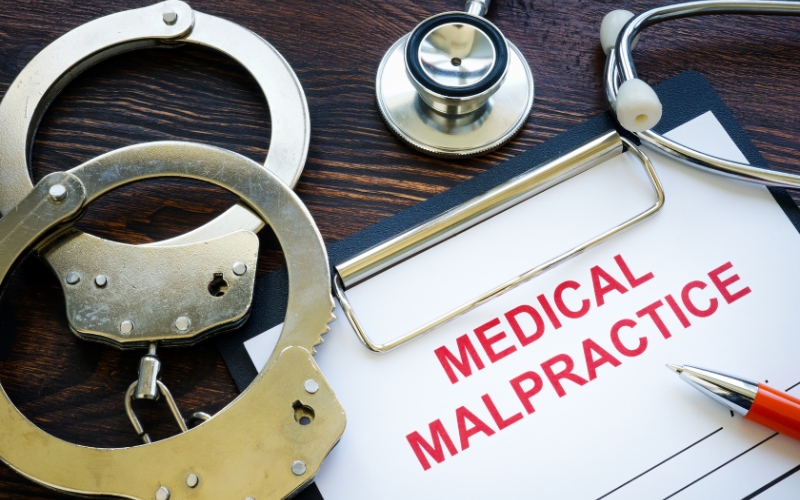
Have you ever felt uncertain about a medical treatment you received?
The frustration of realizing something went wrong can be overwhelming. Understanding how to document and prove incorrect treatment is vital if you’re considering legal action. Proper documentation not only helps in building a strong case but also ensures that you are fully prepared to hold those responsible accountable.
Navigating through medical malpractice can feel like a daunting task. However, knowing the right steps to take can make all the difference. From gathering evidence to consulting experts, each action you take helps strengthen your position.
In this blog, we’ll break down the process into manageable steps, making it easier for you to understand how to effectively document and prove your case. Whether you’re just starting or are deep into the process, this information will empower you to take control of your situation and seek the justice you deserve.
Understanding Medical Malpractice
Medical malpractice occurs when a healthcare professional provides substandard care, leading to patient harm. Identifying and proving incorrect treatment involves understanding what constitutes malpractice. It’s essential to know that not all poor outcomes are due to negligence. Malpractice requires showing that the treatment deviated from accepted medical standards.
Key Elements of Malpractice:
- Standard of Care: The level of care expected from a competent professional.
- Breach: Failure to meet this standard.
- Causation: The breach directly caused harm.
- Damages: Harm that resulted from the breach.
Understanding these elements helps you evaluate if your case qualifies as malpractice. Start by documenting your treatment and consulting with healthcare professionals to confirm if the standard of care was breached.
Documenting Your Treatment
Accurate documentation is crucial for proving incorrect treatment. Start by gathering all relevant medical records, including:
- Doctor’s Notes: Detailed notes from your visits.
- Diagnostic Tests: Results of tests and imaging.
- Prescriptions: Records of medications prescribed.
Organize these documents chronologically. This timeline will help show how treatment progressed and where things went wrong. Detailed records support your claim and provide a clear picture of the treatment you received.
Seeking Expert Opinions
To strengthen your case, consult with medical experts. These professionals can review your records and provide an opinion on whether the treatment was below standard. Their insights help establish whether the care you received was substandard and how it led to your injuries.
Types of Experts to Consider:
- Medical Reviewers: Analyze your treatment records.
- Specialists: Provide opinions based on their field.
An expert’s testimony can significantly impact your case, providing credibility and clarity to your claims.
Collecting Evidence of Harm
Proving that incorrect treatment caused harm involves documenting the negative outcomes you’ve experienced. This evidence might include:
- Additional Medical Records: Records of follow-up treatments.
- Personal Testimonies: Statements about how your health has been affected.
- Impact Statements: Descriptions of how the harm has affected your daily life.
Clear evidence showing the extent of your suffering helps build a stronger case. It’s vital to demonstrate how the incorrect treatment has caused significant harm or exacerbated your condition.
Consulting a Personal Injury Lawyer Specializing in Incorrect Treatment Cases
Navigating a medical malpractice case can be complex. A personal injury lawyer specializing in incorrect treatment cases can offer valuable expertise. They understand the nuances of medical malpractice law and can guide you through the process. They will help you organize your documentation, seek expert opinions, and build a compelling case.
Choosing the right lawyer ensures that you have an experienced advocate working on your behalf, increasing the chances of a favorable outcome.
Filing a Complaint
Once you have gathered sufficient evidence and consulted with experts, the next step is to file a formal complaint. This typically involves:
- Drafting a Complaint: Outline your allegations and evidence.
- Submitting to the Appropriate Authority: Depending on your case, this could be a medical board or court.
Filing a complaint initiates the legal process. Your lawyer will assist in drafting and submitting the complaint, ensuring that it meets all legal requirements and accurately represents your case.
Engaging with a Personal Injury Attorney
A personal injury attorney plays a crucial role in handling your malpractice claim. They will:
- Review Evidence: Analyze your documentation and expert opinions.
- Negotiate Settlements: Work to reach a fair settlement with the responsible party.
- Represent You in Court: Advocate for your case if it goes to trial.
Proving incorrect treatment in a medical malpractice case requires meticulous documentation and expert testimony. By gathering detailed records, seeking professional opinions, and consulting with a knowledgeable personal injury lawyer specializing in incorrect treatment cases, you strengthen your case. Understanding the legal process and having the right support ensures you can navigate the complexities of a malpractice claim effectively. With proper evidence and guidance, you can pursue justice and hold those responsible accountable.




